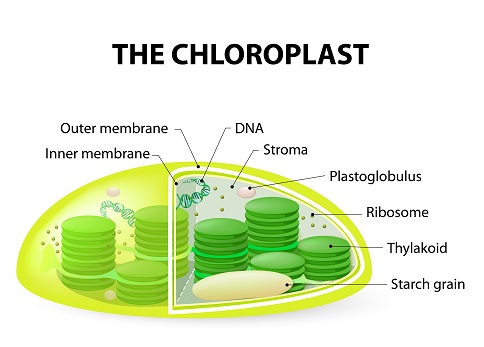Chloroplasts are composed of three parts: the chloroplast envelope, the thylakoid, and the stroma, and are organelles that specialize subunits in the cells of eukaryotic autotrophs such as green plants and algae. Its primary role is to carry out photosynthesis and ensure the normal life activities of the plant body. It contains the photosynthetic pigment chlorophyll, which captures energy from sunlight and stores it in the energy storage molecules ATP and NADPH while releasing oxygen. At the same time, chloroplasts are also semi-autonomous organelles with their characteristic double-stranded circular DNA, a small amount of RNA, ribosomes, and enzymes that carry out protein biosynthesis and can synthesize a portion of their essential proteins.

Lifeasible, a renowned biotechnology company, always explores chloroplasts using new technologies and methods. Our experienced technical team ensures a quality service experience for our clients, helping them to understand and study the functional properties and genetic characteristics of chloroplasts. The technical services we offer are as follows.
Lifeasible's technical team uses the Swiss-Prot database to predict chloroplast protein structure information, combined with a hierarchical multi-labeling architecture to detect sub-chloroplast localization and help customers understand the functions performed by sub-chloroplasts.
Plant chloroplasts can act as an excellent bioreactor for synthesizing exogenous proteins. Lifeasible offers solutions to help customers use chloroplasts to synthesize medicinal proteins, vaccines, etc.
Lifeasible provides chloroplast genome sequencing services based on a variety of sequencing technologies to help botanists understand the genetic characteristics of chloroplasts and effectively carry out research on plant phylogeny, population evolution, and plant genetics.
Based on an advanced plant biotechnology platform, Lifeasible uses multiple bioinformatic tools to predict RNA editing sites in plant chloroplast genes, providing rapid information and site characterization of RNA editing sites.
Plant chloroplast genome editing can effectively increase photosynthesis and improve the yield of food crops. Lifeasible's targeted chloroplast genome editing technologies based on particle bombardment and the Golden Gate cloning system have been widely used in wheat, barley, oats, maize, and rice.
CCM is an adaptive mechanism that has evolved in plants in response to low CO2 concentrations. Lifeasible has attempted to transfer functional algal CCM into higher plants such as rice to improve photosynthetic efficiency and crop yield.
Lifeasible has an independent plant molecular laboratory and a multidisciplinary technical team that can provide various customized services related to chloroplasts for the plant industry, universities, and research institutes. Our technology platform can effectively support a wide range of needs in plant science research. If you are interested in our services, please contact us for more information.